AMA Vertical Tasting
Château La Tour Blanche

Nestled in the heart of Château La Tour Blanche lies a unique public school dedicated to teaching the art of viticulture.
Over a decade ago, as a student, I first encountered this remarkable institution. It even boasts alumni like the famous flying winemaker Michel Rolland, was once a disciple of this institution.
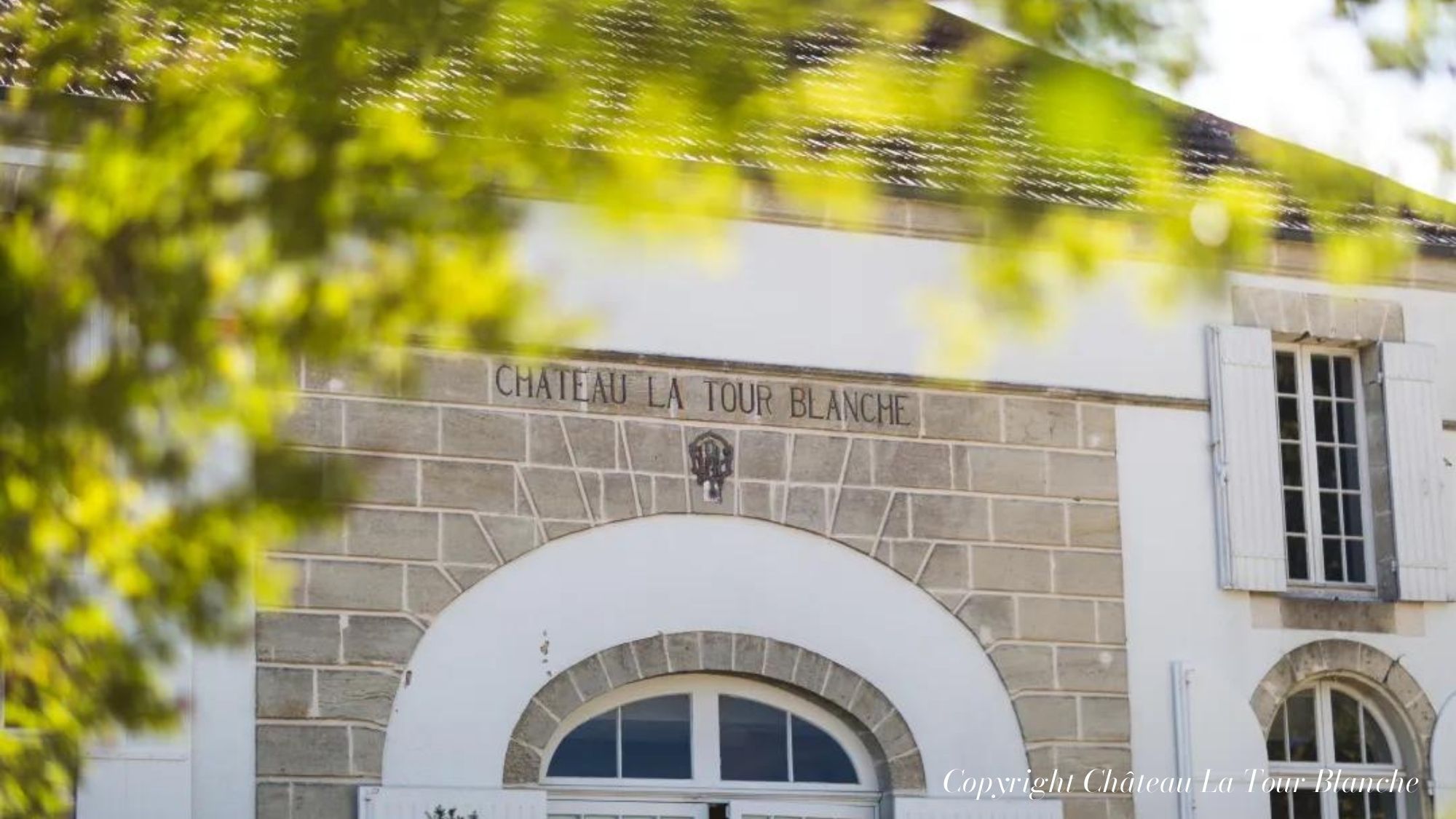
But have you ever wondered why such a prestigious classified growth would house a public school?
In France, public schools are synonymous with being “free.” From a commercial standpoint, it would seem far more lucrative to use this prime land for grape cultivation! The answer to this intriguing question is likely to surprise many of my Chinese friends. I was certainly very surprised when I first learned the truth: this 1855 First Growth estate is actually state-owned!
Yes, you heard that right—it is State-Owned. Today, Château La Tour Blanche is fully owned by the Nouvelle-Aquitaine region (La Région Nouvelle-Aquitaine, the very region that encompasses Bordeaux), and it has been so for over a century. In a way, Château La Tour Blanche is to France what “Tongrentang” is to China, a venerable “state-owned brand” steeped in history.

So, how did Château La Tour Blanche come to be known as a “state-owned old brand”?
To uncover this story, we must journey back to the year 1907.
The third owner of Château La Tour Blanche, Monsieur Osiris, was a wealthy financier known for his philanthropy. Not only did he restore the main building of Château La Tour Blanche, but he also generously funded numerous research projects in the field of oenology. One of the beneficiaries of his support was none other than Louis Pasteur, revered as the “Father of Microbiology.” Pasteur, whose name is immortalized in “pasteurization,” completed several significant studies under Osiris’s patronage.
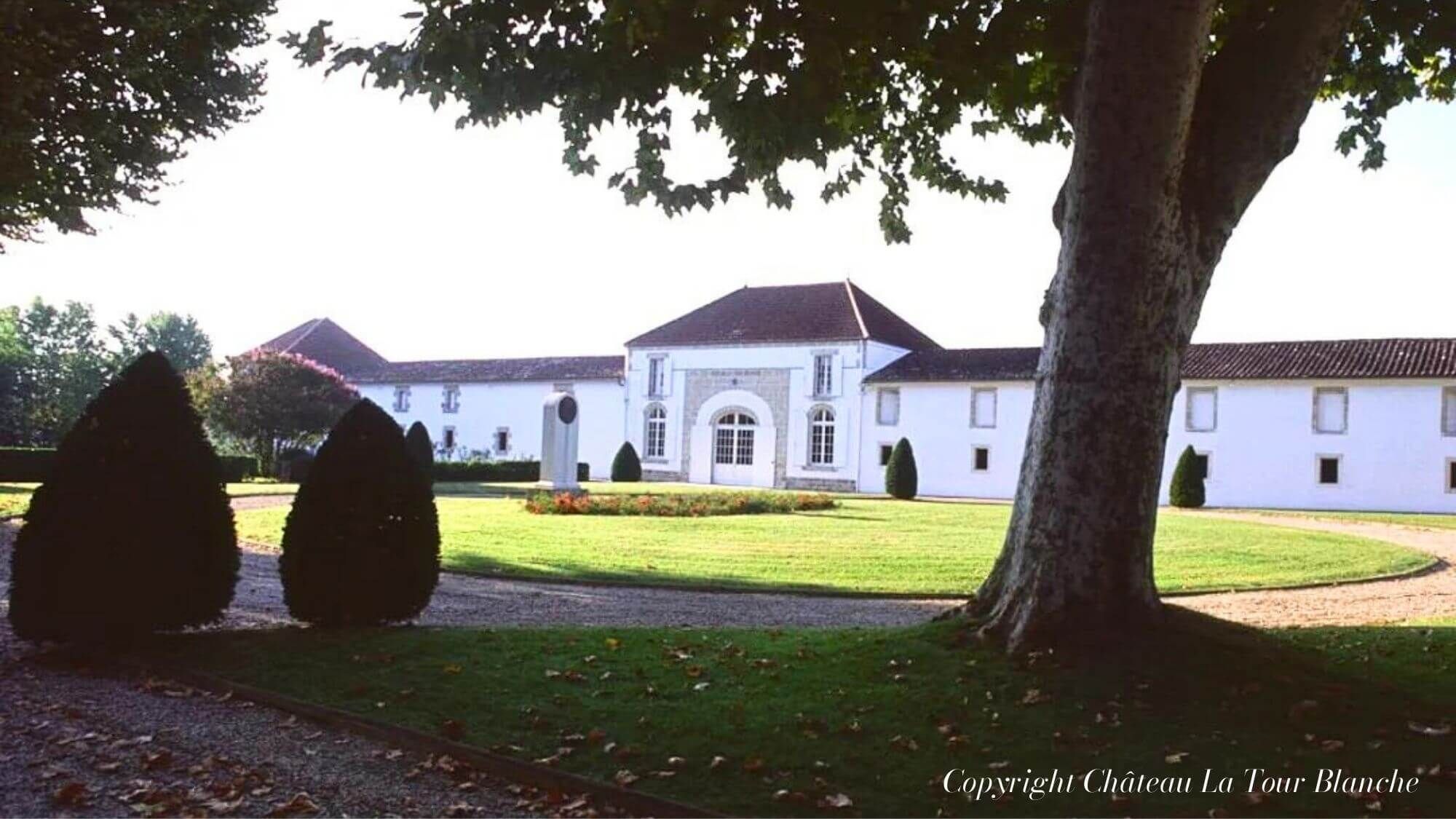
However, Monsieur Osiris had no heirs to inherit the estate. He could not bear the thought of his beloved Château La Tour Blanche falling into neglect after his death. After much contemplation, Osiris made a decision that astonished everyone: he decided to donate Château La Tour Blanche to the state, free of charge. He attached one condition to this generous bequest: the state must establish a school within the estate to teach viticulture and oenology, thus ensuring that his legacy would continue to benefit the world of wine.
The school that Osiris envisioned was completed in 1911, fulfilling his last wish and giving Château La Tour Blanche a new purpose: to educate and nurture future generations.
To this day, the school has trained hundreds of students, contributing immense value not only to Bordeaux but to the global wine industry.

My love for Château La Tour Blanche stems from its ‘inner purity.’
The first time I tasted Château La Tour Blanche, I fell in love with it instantly. To me, its most defining characteristic is its “purity and simplicity.” Regardless of the vintage, it steadfastly upholds its core principles and standards. It may sometimes lack complexity due to harsh weather, or it may not be as rich due to cooler temperatures, but you will never find any trace of unwanted microorganisms. Whenever you open a bottle of Château La Tour Blanche, you will always experience its untainted fruit aroma, a pure essence that remains unsullied by its surroundings. This can be summed up in two French words: “Toujours Pur.”
Today, I invite you to join me in exploring the golden world of Château La Tour Blanche, to uncover the secret behind its “inner purity.”
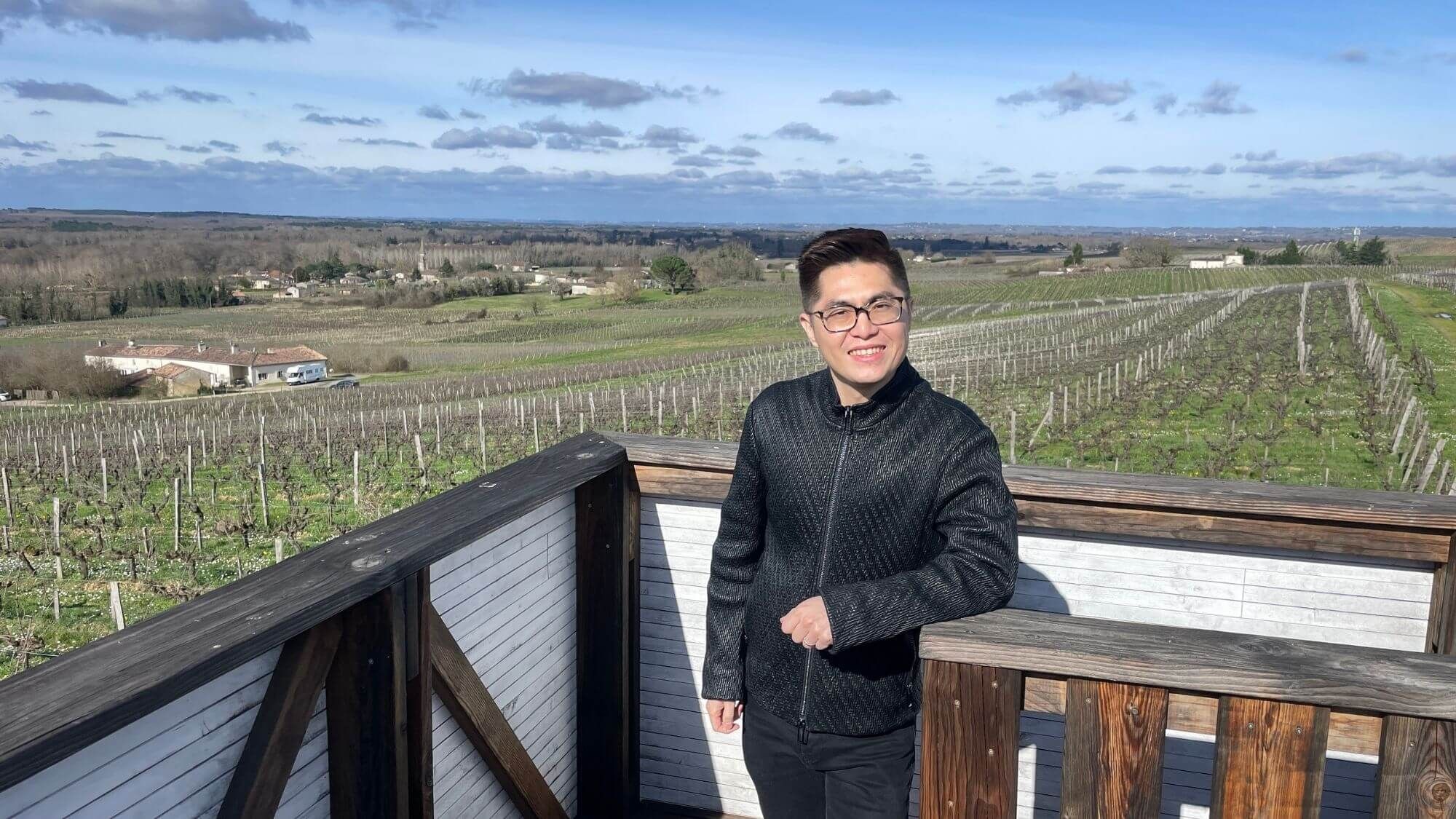
#1 The Anchor of Stability
Belvédère Château La Tour Blanche’s vineyard spans 46 hectares, with 40 hectares of contiguous vines encircling the estate on a south and southwest-facing highland known as Belvédère. During my visit to the château, General Manager Miguel Aguirre took me to a wooden lookout tower on this highland. Pointing to the nearby Ciron river and then to the distant Garonne River, he said with a meaningful tone,
“The secret of Château La Tour Blanche lies here. The terroir here fulfills every viticulturist’s dream for noble rot grapes—humidity, sunlight, and wind—all in perfect balance.”
Miguel continued, explaining that the vineyard of Château La Tour Blanche is tightly linked with the mist-generating Ciron. During the harvest season, if you stand on this highland, you can clearly see a mist belt aligning perfectly with the path of the Ciron. This mist belt spreads with the humid air over the highland, easily covering the entire vineyard.
Additionally, Belvédère, at an elevation of 60 meters, is one of the highest points in the Sauternes region. Compared to low-lying areas, the noble rot grapes here can enjoy sunlight earlier as the mist dissipates, effectively curbing the spread of botrytis cinerea.

Furthermore, Château La Tour Blanche possesses a unique advantage that many other estates lack: wind. Regardless of the season, you can always feel a gentle breeze at Belvédère. During the growing season, this wind reduces the risk of mold in the vineyard, and come harvest time, it not only further inhibits the growth of botrytis but also helps to evaporate some of the water from the grape berries, enhancing their concentration.
This is why I believe Château La Tour Blanche is a noble rot winery favored by the divine. The unique terroir of “humidity, sunlight, and wind” ensures its signature “pure” fruit aroma, firmly securing its place at the forefront of noble rot wine producers.

#2 Soil and Viticulture
Regarding the soil, Château La Tour Blanche shares similarities with other classified growths in Sauternes. The highland vineyards have a gravelly topsoil with a substantial layer of clay beneath. In the lowland vineyards, especially in the areas near the Ciron River, the topsoil contains more sand, with a deep layer of limestone below, somewhat resembling the soil found in Barsac.
In terms of cultivation methods, Miguel has boldly embraced organic farming, making Château La Tour Blanche one of the few organic estates in Sauternes. To maximize soil vitality, the château maintains a layer of herbaceous plants on the vineyard surface. This not only prevents soil moisture evaporation but also enhances microbial activity.
Miguel explained to me that surface vegetation is crucial for organic farming but cannot be entirely preserved, as overgrown weeds might compete for the limited nutrients in the soil. His approach is to retain only half of the natural vegetation and then plant appropriate herbaceous plants according to the soil characteristics. Typically, alfalfa is planted in clay-rich soils, while grains are sown in sandier soils.

Moreover, Miguel discovered a natural and cost-free method of weed control, which I found fascinating and worth sharing.
According to Miguel, local shepherds drive their sheep to graze in the woods around the Ciron stream. However, when it is time to return to the sheepfold at night, a few gluttonous sheep always get lost. The château, therefore, invited the shepherds to bring their flocks into the vineyards to graze. This not only saves on mowing costs but also helps the shepherds manage their flocks more easily—a win-win situation.
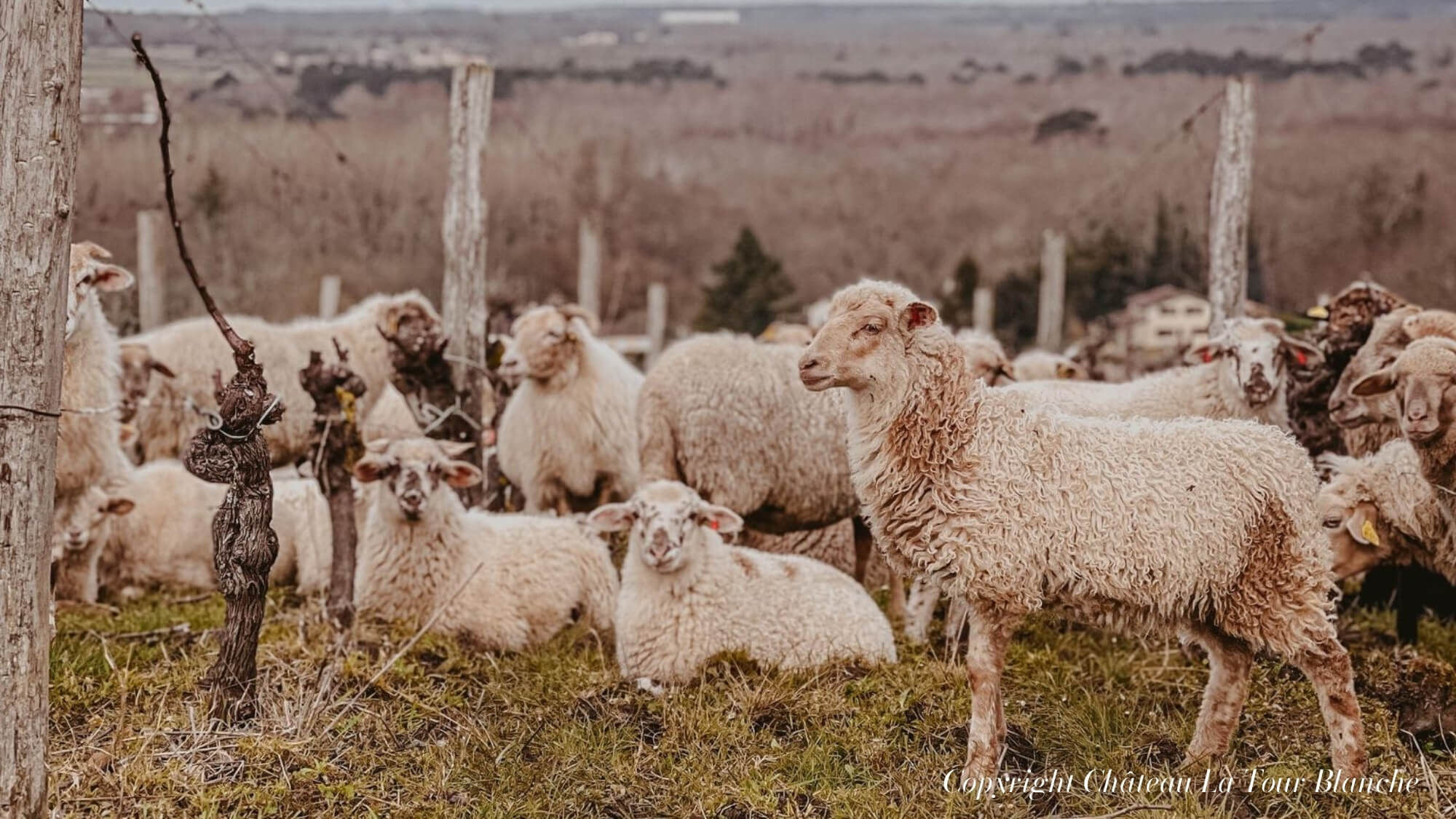
#3 Winemaking Process
In Miguel’s view, the sugar content of noble rot grapes is crucial; only grapes with a sugar level of 340-380 g/l are suitable for producing their flagship wine. However, more sugar isn’t always better; the complexity of the fruit aromas and the acidity of the vintage must also be considered. Typically, the château divides the harvest of noble rot grapes into three stages:
1. Grapes that have only a slight touch of noble rot and are relatively plump are harvested. These grapes primarily exhibit stone fruit and honey aromas, with a hint of mushroom notes. They usually have higher acidity and a fresher taste.
2. Grapes that are fully covered with noble rot but not completely shriveled are harvested next. These grapes have more pronounced spice notes, with tropical fruits and jammy aromas dominating the profile.
3. The final stage involves harvesting the fully shriveled noble rot grapes. These grapes have extremely high concentration and sugar content, significantly enhancing the depth and dimension of the palate.
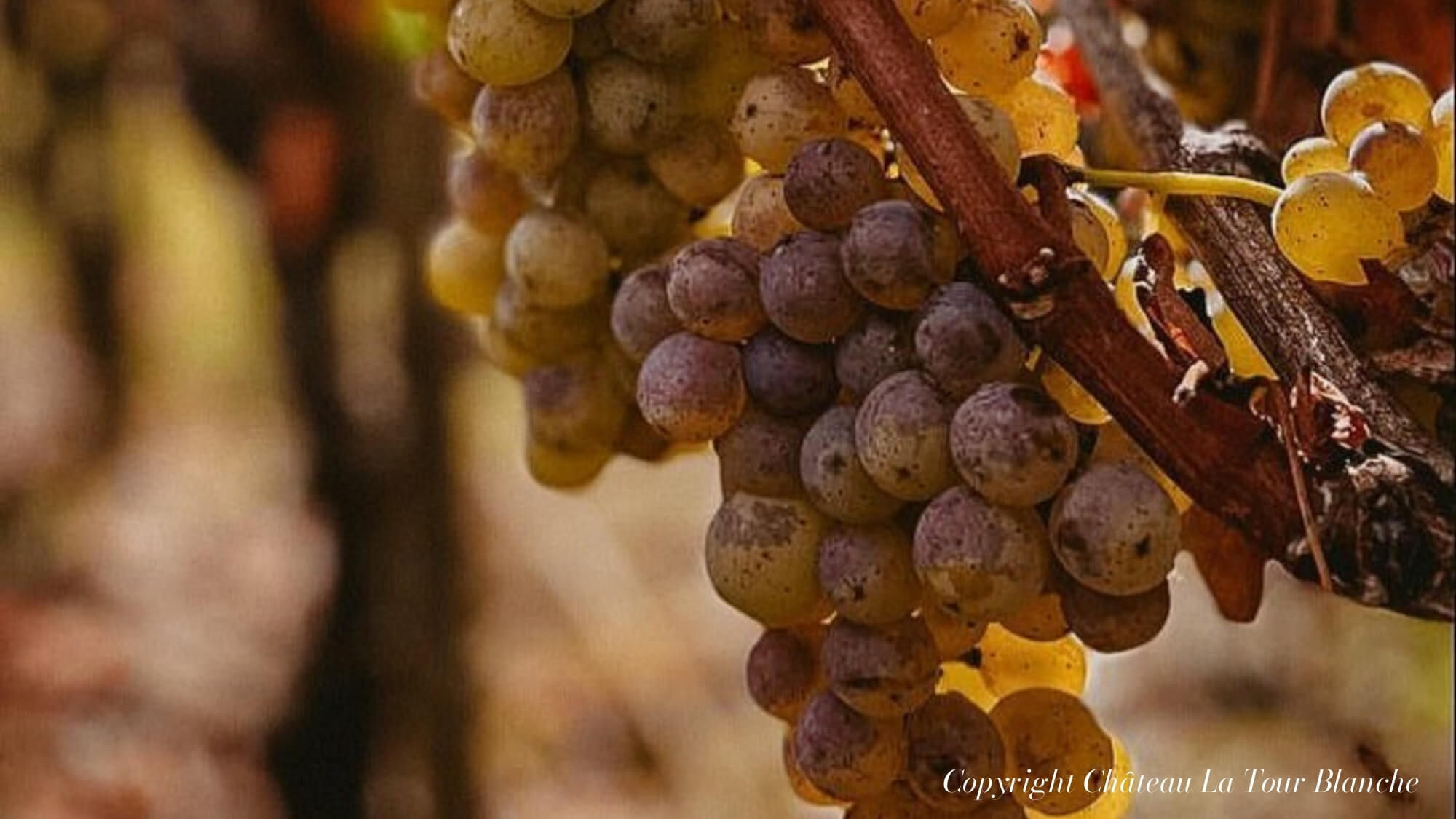
In my opinion, these grapes are the soul of all top-tier noble rot wines but are also the hardest to manage. Estates like Château La Tour Blanche, which can achieve such high concentration without losing their original floral and fruity fragrance, are rare in the entire Sauternes region.

During this visit to the château, Miguel introduced me to Château La Tour Blanche’s newest creation: Léonie de La Tour Blanche. (Thanks to the protection of France’s Le Coefficient K regulation, Château La Tour Blanche is allowed to use grapes grown for noble rot wines (Sauternes AOC) to produce dry white wines (Bordeaux AOC)). This time, Miguel let me taste the 2020 vintage Sémillon from three different soil types: clay, limestone, and sand.
- The Sémillon from clay soil is full-bodied and solid, with a deep structure.
- The Sémillon from limestone soil is tall and slender, with a rich minerality.
- The Sémillon from sandy soil is more fragrant and delicate, with the softest texture.
By blending these in specific proportions (40% clay, 40% limestone, and 10% sand for the 2020 vintage), and adding a small amount of Sauvignon Blanc, they created a high-end white wine with a limited annual production of only 5,500 bottles.

You can find detailed tasting notes about this wine on their website, but I must say, the impact this wine had on me was profound. It completely overturned the conventional image of Bordeaux white wines.
In a nutshell:
“Crafted with a Burgundy-like approach in the Sauternes region, this is a top-tier white wine: an immediate masterpiece.”
I am confident that soon, you will see this exceptional white wine from Sauternes on the market.

In closing, I want to extend my heartfelt thanks to Miguel and Château La Tour Blanche for the meticulously arranged tour and tasting. During the four-plus hours I spent there, I gained numerous insights and a more vivid understanding of noble rot grape harvesting and blending. This 3,500-word article encapsulates some of my reflections on Château La Tour Blanche, and I hope it will be of some help to your work as well.
Many years ago, Monsieur Osiris imbued Château La Tour Blanche with the mission of “teaching and nurturing.” Today, I too, like Monsieur Osiris, will share the beauty of noble rot wines with more Chinese friends in my own way.
